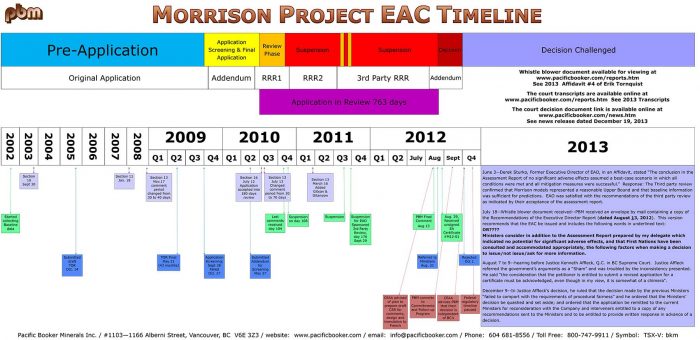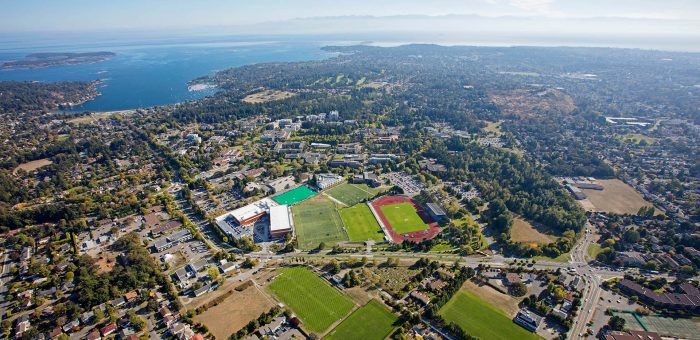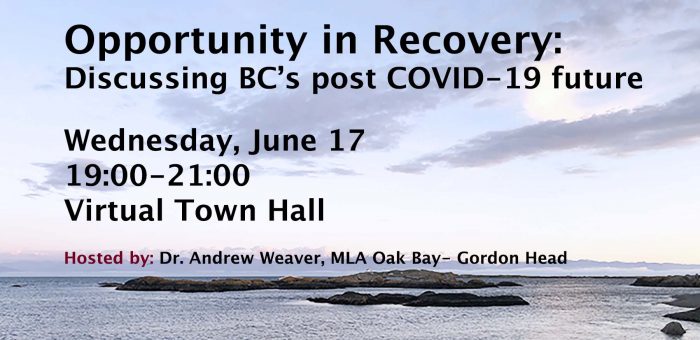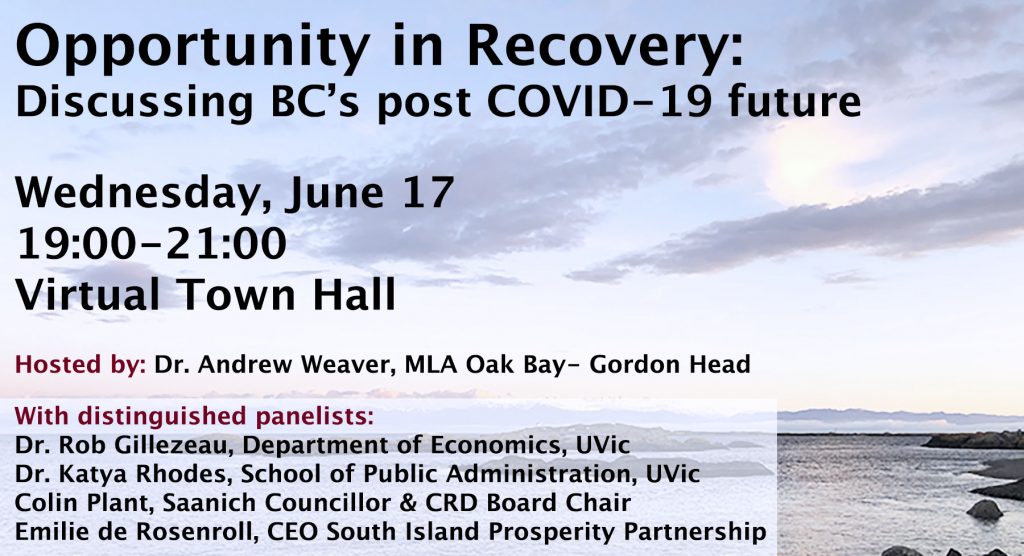Ongoing regulatory inconsistencies facing Pacific Booker’s Morrison mine project
Yesterday I published a blog post detailing the apparent regulatory inconsistencies facing the advancement of Pacific Booker’s Morrison Mine project. Today during question period I rose to explore this issue further with the Minister of Environment. Today’s question built upon an initial question I asked the Minister of Energy Mines and Petroleum Resources on March 5, 2020.
Below I reproduce the text and video of our exchange.
Video of Exchange
Question
A. Weaver: On March 5, I asked the Minister of Energy, Mines and Petroleum Resources a question concerning regulatory inconsistencies in the provincial government’s handling of Pacific Booker’s proposed Morrison mine. I’d like to explore this a little further.
In 2015, after reviewing the project for a second time, the Ministry of Environment issued a section 17 order that the project undergo further assessment. Despite numerous exchanges with the environmental assessment office and the completion of an in-depth study of Morrison Lake, Pacific Booker has been unable to clarify the precise nature of what is actually required in the section 17 order. For Pacific Booker, this order has been tantamount to a rejection of its project without the ministry formally saying no.
Government recently amended the environmental assessment process to provide certainty of process and clarity of regulatory considerations. When presented with an application for an environmental assessment certificate, the minister is given three options under the 2018 Environmental Assessment Act:
(1) grant the certificate,
(2) grant the certificate with conditions attached or
(3) reject the project.
Pacific Booker’s treatment doesn’t align with the new assessment standards. They’ve been given the opposite of regulatory certainty, and their project has been shunted off for a further assessment. My question is to the Minister of Environment. Considering the recent changes to the environmental assessment process, will he amend the 2015 order to clarify the nature of the work required by Pacific Booker Minerals?
Answer
Hon. G. Heyman: Thank you to the member for the question. I recall the question to my colleague, the Minister of Energy, Mines and Petroleum Resources, in March quite well. As the Minister of Energy and Mines said at the time, he and I can’t speak to the specifics of why the old government made the decision that it made with respect to the proposed Morrison mine.
The member is also correct. We made significant changes to the Environmental Assessment Act through revitalization, and we’re proud of that as our government. We brought new transparency to the act. We’ve included engagement of Indigenous peoples and local communities at the front end, and we have taken steps to ensure that good projects that respect the environment, that respect Indigenous peoples and that respect the public can be approved more quickly with greater certainty.
However, with regard to Pacific Booker, the member is correct. Under the old act, the decision was made to require additional information from the proponent before a final decision on the proposal was made.Under the new legislation or the transition regulation, there is no ability to take a project like Morrison that has proceeded this far down the process and transfer it to the provisions of the new act. But it’s my understanding that the company is currently working through the required regulatory process for further assessment in tandem with the environmental assessment office.
Supplementary Question
A. Weaver: Thank you, Minister, for your answer. I think the minister may have missed the point. Pacific Booker doesn’t know what the section 17 order does because what they’re supposed to do has not been conveyed to them with any certainty. So they are left with an uncertain order, of which they don’t know how to respond. So it’s not possible for them to move through the regulatory process when that process has not been defined in which they could go.
They have conducted detailed assessments of Morrison Lake and its internal wildlife, including measuring water quality and lake mixing patterns as well as investigations into fish habitat and spawning patterns. They have pledged to use cutting-edge technology to reduce groundwater seepage from the tailings storage facility. They’ve even completed a request, and they were the only one asked to do so, to comment on the implications of Mount Polley for their tailings management.
Throughout the protracted environmental assessment process, Pacific Booker has stated its preference to use local suppliers and to hire local workers. The project would generate over 1,000 jobs in the region near Smithers, and it would provide millions of dollars in tax revenue. At a time when the provincial economy is reeling due to the efforts of COVID-19, the project would give that region a much-needed economic boost.
My question, again, to the Minister of Environment is this. Given the extensive work undertaken by Pacific Booker Minerals to examine and reduce the environmental impact of the potential Morrison mine project and the potential economic benefit to the province, will this government commit to ensuring that the company receives a timely, unbiased review of the latest proposal, and in particular, is given clear instructions from your office so that it knows what boxes need to be ticked so that they can follow due process, rather than second-guessing certain people who haven’t made that very clear?
Answer
Hon. G. Heyman: Thank you again to the member for the supplemental question.
The company, of course, has to provide some very specific additional information that was required under the order. The order was specific. Some examples of the type of additional information required are sockeye salmon use of Morrison Lake, upper and lower Tahlo Creek and the Morrison River, hydrogeological and groundwater data for areas between the mine and Morrison Lake and further engagement with the Lake Babine Nation and other impacted First Nations.
I’m advised that the company made its latest submission to the environmental assessment office in December and that environmental assessment office staff met with the company this past February as additional information was required from the company. It is certainly not the intention of our government to make proponents guess at what is required. I checked with the environmental assessment office, and my understanding is that staff there are working to help answer any questions that the proponent has with respect to the information required.
I’m advised that the company plans to provide an update to the environmental assessment office regarding their next steps, and the environmental assessment office will be very happy to assist them in a timely answering of the questions required by the order. As minister, I assure that when the application is complete and ready for reconsideration, it will be considered in a timely manner.
Tribute to a Canadian Hero: John Hillman
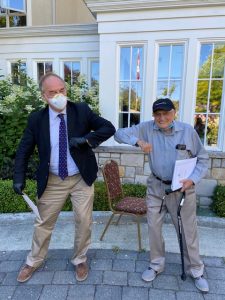 Today in the legislature I rose to pay tribute to a constituent, John Hillman, who, at the age of 101, recently completed his goal of walking 101 laps around the courtyard of his residence at the Carlton House in Oak Bay to raise funds for Save the Children Canada’s Emergency COVID Relief Fund.
Today in the legislature I rose to pay tribute to a constituent, John Hillman, who, at the age of 101, recently completed his goal of walking 101 laps around the courtyard of his residence at the Carlton House in Oak Bay to raise funds for Save the Children Canada’s Emergency COVID Relief Fund.
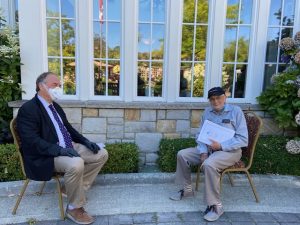 Below I reproduce the text and video of my two minute tribute.
Below I reproduce the text and video of my two minute tribute.
As an update, during the afternoon of July 29 I was able to visit John Hillman at Carlton House and present him with a number of presentation copies of the statement.
Video of Tribute
Text of Tribute
It gives me great honour to rise today to pay tribute to a remarkable constituent — Mr. John Hillman.
At the age of 101, Mr. Hillman set a goal of raising $101,000 for Save the Children Canada’s Emergency COVID Relief Fund by completing 101 laps around the courtyard of his residence at the Carlton House in Oak Bay.
He was inspired by 100-year-old war veteran Tom Moore who raised over 55 million dollars for the UK’s National Health Service, by walking around his garden 100 times with a walker.
Mr. Hillman not only completed the 101 laps (plus a victory lap), but he easily surpassed his expectations by raising $166,551.
Mr. Hillman was born in Newport, Wales in 1919. Like all young Welsh men at the time, he was an avid rugby player. In fact, Mr. Hillman’s father Jack represented Wales on their national team. John, on the other hand, went on to compete for Wales in fencing.
At the age 17, and with little prospect for local employment Mr. Hillman left Wales to join the Royal Air Force.
In 1939, he and his squadron were posted to France where Mr. Hillman served as a wireless operator.
 As allied forces fled to Dunkirk ahead of the rapidly advancing Wehrmacht, John Hillman, and the other 59 members of his squadron were cut off and left behind.
As allied forces fled to Dunkirk ahead of the rapidly advancing Wehrmacht, John Hillman, and the other 59 members of his squadron were cut off and left behind.
They were told this:
“you lads stay behind, clean up, and make your way back as best you can”.
Their goal was to head south to board the English troop carrier, the HMT Lancastria.
Blessed with a stroke of good luck, Mr. Hillman arrived in the French port of Saint-Nazaire a day late so missed his opportunity to board the ship.
Tragically on June 17, 1940, just offshore from the port, the Lancastria was bombed and sank in just 20 minutes. Some 4000 men, women and children died in what remains the greatest loss of life in British maritime history.
 Mr. Hillman subsequently made his way northwards to Brest, where he was able to escape to England on a Royal Navy destroyer.
Mr. Hillman subsequently made his way northwards to Brest, where he was able to escape to England on a Royal Navy destroyer.
It was in England that Mr. Hillman met and married his wife Irene. The couple have been married for 78 years, and when their daughter also married a Canadian, Mr. and Mrs. Hillman started to visit Canada.
Mr. Hillman eventually retired in Ottawa in 1988 from his career as an electrical engineer. After a brief return to the UK, Mr. and Mrs. Hillman moved back to Canada and settled in a house on Beach Drive in Oak Bay.
When asked why he undertook the fundraiser, John Hillman said “I owed Canada something”.
A truly humble man, Mr. Hillman has a wonderful sense of humour and brings joy to all who know him.
As a lovely tribute to support Mr. Hillman, his 9-year-old great-grandson did a parallel walk in Kingston, Ontario.
What did Mr. Hillman do when he attained his goal of 101 laps? “I had a cold beer” he commented. Now that was truly well deserved!
Please join me in celebrating the remarkable accomplishments of a Mr. John Hillman. Thank you.
Response to government investment in pedestrian and cyclist infrastructure
Today the BC government announced a number of investments across the province to improve active transportation options for British Columbians. I’m very pleased that the University of Victoria, in partnership with the District of Oak Bay, received $316,380 toward Oak Bay’s University Drive Connection Pathway. As noted in our press release, reproduced below, this investment will ensure increased safety for those walking or biking to, from, and around the UVic campus. In addition, active transportation is a key element of the province’s CleanBC economic recovery plan.
Media Release
MLA Weaver response to B.C. government investment in pedestrian and cyclist infrastructure
For Immediate Release
June 24, 2020
Victoria, BC — Today’s announcement by the provincial government regarding investments in pedestrian and cyclist infrastructure on Vancouver Island comes as welcome news. Included in the investment is funding of $316,380 towards Oak Bay’s University Drive Connection Pathway, a bi-directional pathway which will vastly improve commuting and safety for cyclists and pedestrians in the riding of Oak Bay-Gordon Head. This active transportation infrastructure project is expected to be completed by March 2021.
“I’m delighted that the province is investing in active transportation on the University of Victoria campus in partnership with the District of Oak Bay”, commented Andrew Weaver, MLA for Oak Bay Gordon Head, “investing in active transportation is a key element of the province’s CleanBC economic recovery plan”.
“With nearly 22,000 students, this investment will ensure increased safety for those walking or biking to, from and around the campus.”
-30-
Media contact
Judy Fainstein
Executive Director
Legislative Office of Andrew Weaver, MLA
+1 250-744-7615 | Judy.Fainstein@leg.bc.ca
Opportunity in Recovery: A Discussion of BC’s post COVID-19 future
On Wednesday June 17 we held a virtual town hall to discuss BC’s post COVID-19 future and answer any related questions. It was a very successful event and I grateful to the myriad participants for their thoughtful questions and comments. We’ve had a lot of requests for a copy of the video of the event and so I’ve reproduced it below for those interested.
I wish to offer sincere thanks to the panelists Katya Rhodes, Rob Gillezeau, Colin Plant, Emilie de Rosenroll and special guests Merran Smith and the Honourable George Heyman for their insightful contributions to the town hall.
Video of Panel Presentation
Opportunity in Recovery: Discussing BC’s post COVID-19 future
Join us on June 17 for a virtual town hall hosted by Dr. Andrew Weaver, MLA for Oak Bay-Gordon Head. Dr. Weaver will be joined by distinguished panellists Dr. Rob Gillezeau, Dr. Katya Rhodes, Colin Plant, and Emilie de Rosenroll to discuss BC’s post COVID-19 future and answer any related questions you may have.
Please confirm your attendance in advance by registering using the link below.
Register in advance for this webinar:
https://us02web.zoom.us/…/register/WN_QtJOU8iGRhKQT8a7kmr75Q
After registering, you will receive a confirmation email containing information about joining the webinar.
Panellist Bios:
Dr. Katya Rhodes is an Assistant Professor in the School of Public Administration and member of the Institute for Integrated Energy Systems at the University of Victoria. She investigates the topics of low-carbon economy transitions and climate policy design using survey tools, energy-economy models, media and content analysis. Prior to joining the academia, Dr. Rhodes worked in the British Columbia (BC) Climate Action Secretariat where she led greenhouse gas (GHG) emissions modelling and economic analyses for the provincial CleanBC plan.
Dr. Rob Gillezeau joined the Department of Economics at the start of 2016. Prior to joining the department, he served as the Chief Economist in the Office of the Leader of the Official Opposition in Ottawa. Dr. Gillezeau’s research applies causal methodology from labour economics to answer questions in modern American and Canadian economic history. His work has examined questions related to the interaction of the War on Poverty and the 1960s race riots, the growth of the North American trade union movement, and the role that the Transatlantic slave trade played in the development of ethnicity on the African continent.
In 2016, Emilie de Rosenroll became the inaugural CEO of the South Island Prosperity Partnership (SIPP). She spearheaded a number of economic development initiatives, including the regional Smart Cities strategy, involving over 50 organizations and including 15 local Governments. Drawing on her extensive governance and Public-Private expertise, the first phase of the strategy focuses on transportation and mobility followed by a focus on building common data platforms along with measurement of Mobility Wellbeing.
Colin Plant is a Saanich councillor where he serves as chair of the arts, culture and heritage committee and as chair of the of the Saanich LGBTQ sub-committee. He is also drama teacher at Claremont Secondary school and is chair of the Capital Regional District Board. Originally from Salmon Arm BC, Mr. Plant graduated from Stelly’s secondary in 1990 as the class valedictorian and has lived in Saanich for 15 years.

